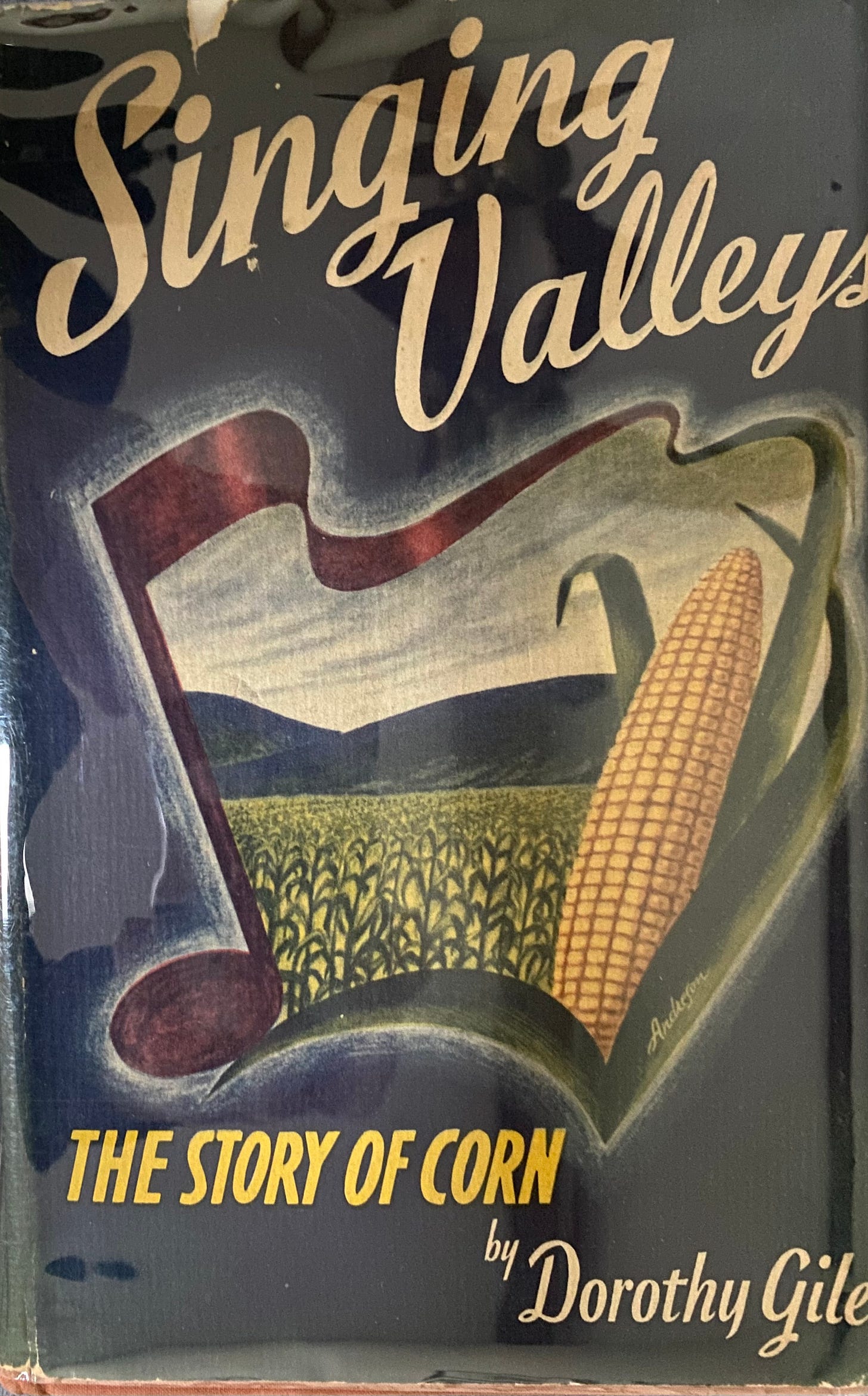I first discovered Dorothy Giles, author of The Little Kitchen Garden (1926) when I sought out all the books in The Little Garden series, edited by Mrs. Francis King, who I profiled last week.
When I first went looking for Dorothy online, I didn’t come up with much until I added “author” as part of the search term. Even that didn’t serve as much information as you would expect for an author who wrote at least eight books. (Note, later, after I completed my initial research, I discovered a Wikipedia article about her. I swear that never came up in my earlier searches!)
Anyway, I managed to figure out a bit of information through a website that has biographies of all kinds of people, including Dorothy. I also mined the preface of The Little Kitchen Garden, written by Mrs. Francis King, for a few more insights into Dorothy’s life, at least up to 1926 when that book was written.
Dorothy Giles was born on April 27, 1892, in Cold Spring-on-Hudson, New York, the daughter of Richard and Ida (Webb) Giles. She graduated from Cathedral School of Saint Mary, Garden City, Long Island in 1910.
Dorothy died in late 1960 at the age of 68. In between, she wrote eight books and tended a garden or two.
She dedicated both The Little Kitchen Garden and a later book, Singing Valleys: The Story of Corn (1940) to her mother.
The editor of The Little Kitchen Garden, Mrs. Francis King, assures us in the preface that
“Aside from an inherited interest in gardening, Miss Dorothy Giles’s experience has been long and intimate in the growing of vegetables, flowers, and fruits in a town on the banks of the Hudson River. For sixteen years past she has been actually working in the garden; and for two years during the war, when labor was scarce, she managed the home garden, doing most of the work herself and supplying not only her own family but two others as well with better vegetables and fruits than could be bought in the market.”
Mrs. King also wrote,
“As Assistant Editor of McCall’s Magazine, Miss Giles has done a little booklet, Down the Garden Path, which has had a tremendously popular reception.”
The booklet, published in 1922, is one of McCall’s Service Booklets. The back cover of the booklet lists some of the other titles in the series, including “How to Entertain Without A Maid”, “Spending the Family Income”, and “Time-Saving Cookery.” Each booklet was 10 cents. (Big rabbit hole to find copies of those. Don’t fall for those over-priced leather-bound reprints!)
In Down the Garden Path, Dorothy wrote,
Gardening is one such interest, too often thrust aside for want of time. But when America shall have become a land of little gardens as well as of great ones, when the flower-garden on the farm, along the village street, in the suburbs, is the rule and not the exception we shall find a new spirit abroad and a loveliness which will do much to bring beauty to dwell with us.
With a little editing, I can imagine many a garden writer writing much the same sentiment today!
Dorothy also wrote at least two travel books: The Road Through Spain (1929) and The Road Through Czechoslovakia (1930). For her book on Czechoslovakia, she was honored as the first woman to receive Decorated Knight, Order of White Lion, by President Masaryk of Czechoslovakia. Her book on traveling through Spain received high praise in at least one review.

She was also on the staff of Cosmopolitan Magazine from 1933 – 1939. In her obituary, she is listed as both an author and a collaborator, having “collaborated in the writing of Sophie Tucker’s biography, Some of These Days.” (Yet another rabbit hole to find out the story behind how those two ended up collaborating…)
Back to The Little Kitchen Garden…
In a mere nine chapters, Dorothy tells us quite a bit about tending a kitchen garden where we might grow vegetables, fruits, herbs, and yes, some flowers too. Each chapter starts with a quote from a poem or prose, including this one from Rudyard Kipling…
Anything green that grew out of the mould
Was an excellent herb to our fathers of old.Wonderful little, when all is said,
Wonderful little our fathers knew.
Half their remedies cured you dead--
Most of their teaching was quite untrue--.
And I quote Dorothy at the beginning of this chapter…
“…and there is an old recipe, dating back to the days of Shakespeare, for an oil of roses and marigolds in which are to be steeped buds of hollyhocks, young hazel, and “flowers of thyme gathered near the side of the hill where fairies used to be,” which if applied to the eyelids, would enable one to see the little folk.”
What a fun way to start a chapter on herbs.
I’ve been reading The Little Kitchen Garden this week as I prepared to feature Dorothy. Under her influence, I’ve been seeking out older tomato varieties and re-thinking which green beans I’m going to grow this year.
Could Dorothy ever have imagined that her book would still be influencing gardeners nearly 100 years after it was published?
The more I dig through the archives of the Internet, the more I find out about Dorothy Giles. I’ve included information here that I could confirm, but I am intrigued by newspaper clippings that showed up listing “Dorothy Giles” as taking art classes in England in 1915. Could it be “our” Dorothy? She certainly led what appears to be an interesting life, so perhaps it was!






